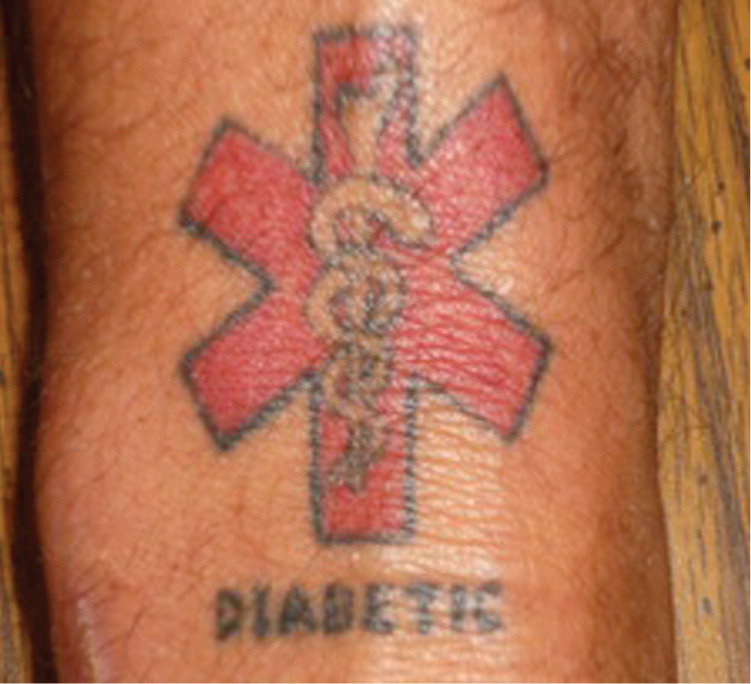
Am Fam Physician. 2011;83(7):796

I was diagnosed with type 1 diabetes when I was 22 months old. For years, I wore medical alert bracelets or necklaces, but they always seemed to break. I wore a 14-karat gold pendant from the time I was 16 years old until I was 37. These pendants would usually only last two or three years before they would wear out beyond repair. At a cost of $100 to $125 for each pendant, I thought there had to be a better solution.
While looking on the Internet at medical alert items, the idea came to me: Why not get a medical alert tattoo? I printed the “Star of Life” symbol, and went to the tattoo shop to see if it could be done. At the tattoo shop, the artist said he had tattooed the “Star of Life” on an EMT before, but had never done one as a medical alert.
Since getting the tattoo, I have received a lot of positive attention. Even people who don't agree with tattoos for various reasons think this one is a good idea. I am not recommending that everyone with diabetes get a tattoo; but, if someone wants to do it, then I see no problem with it. Many people with diabetes may prefer to wear a bracelet or necklace, and that is fine also, but it's important that they have something that will let other people know about their condition.—t.w.
COMMENTARY
When T.W. first came to my office in 2008, I was surprised by the tattoo on his wrist. At the time, I had mixed emotions. Although I admired his innovative idea, I was confused by whether or not it was a good one. I had never seen a medical alert tattoo in my 15 years of treating patients with diabetes, and I realized how little I knew about tattooing. There are many medical publications that address the complications of tattoos in general, but there are virtually no specific mentions of medical alert tattoos. An extensive literature search yielded only one case report of a man with the word “diabetes” tattooed on his chest. Nevertheless, the Internet is full of discussions about medical alert tattooing.
